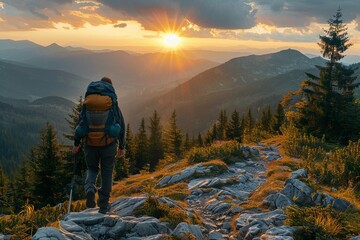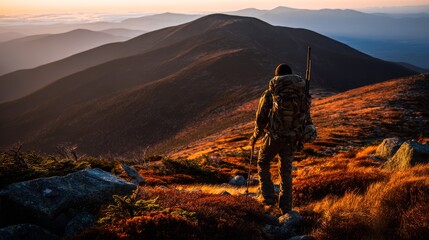
Jaroconca Mountain is one of Peru’s hidden gems in the Andes, located in the Apurímac region. Unlike the better-known peaks that are flooded with tourists, Jaroconca Mountain offers an authentic experience of nature, culture, and adventure. Its elevation of nearly 5,000 meters gives visitors breathtaking views and a challenging but rewarding climb. What makes this mountain even more special is that it remains largely untouched, offering travelers solitude and a deep connection to the environment. For those seeking a destination away from crowded trails, Jaroconca Mountain delivers something unique.
Where Jaroconca Mountain Is Located
Jaroconca Mountain lies in southern Peru, within the Apurímac region of the Andes, a landscape known for its rugged beauty and cultural richness. This location is less famous than Cusco or Arequipa, but it offers equally powerful scenery, from deep valleys to glacial ridges. Surrounding the mountain are small villages and farmland, where life moves at a slower pace. Travelers who reach this area often feel like they have stepped back in time. Remote and peaceful, Jaroconca Mountain gives adventurers the opportunity to explore landscapes without noise, crowds, or distractions.
Why Jaroconca Mountain Is Special
Jaroconca Mountain stands out because of its authenticity. While other mountains in Peru are well-developed for tourism, this peak has remained off the radar, allowing its raw wilderness to shine. You won’t find tourist shops or overused trails here. Instead, you’ll discover silence, pristine views, and real connections with local culture. Travelers often describe Jaroconca Mountain as a place that feels unspoiled and pure. Its charm lies not only in its altitude or scenery but in its ability to make people feel deeply connected to nature and heritage.
Hiking at Jaroconca Mountain
The hiking trails around Jaroconca Mountain range from gentle paths through farmland to rugged routes climbing high into the ridges. Because the mountain is less visited, many of the trails are not clearly marked, which adds both challenge and adventure. Hikers can enjoy panoramic views of valleys and distant peaks, all while being surrounded by quiet nature. Multi-day treks are also possible, with camping under starry Andean skies being one of the highlights. Hiking here is less about convenience and more about experiencing the mountain in its natural state.
The Best Time to Visit Jaroconca Mountain
When planning a trip to Jaroconca Mountain, timing is important. The dry season, which runs from May to September, is the most favorable time. During these months, trails are safer, rainfall is limited, and the skies are clear, allowing for stunning views of the surrounding peaks. The rainy season brings lush landscapes but also makes trails slippery and difficult. For those who want the best experience, the dry months are ideal. This timing also coincides with many cultural festivals in the region, giving travelers another reason to visit.
The Culture Around Jaroconca Mountain
The area around Jaroconca Mountain is home to small Andean communities that preserve traditions passed down for centuries. Many people still rely on farming, herding, and weaving colorful textiles, all of which reflect a way of life rooted in the land. Hiring local guides not only ensures safety but also opens doors to cultural exchange. Visitors can learn about local legends, farming practices, and rituals tied to the mountain. Traveling here is not just about seeing a landscape; it’s about experiencing a culture that remains strong and vibrant.

Wildlife at Jaroconca Mountain
The environment around Jaroconca Mountain is home to incredible wildlife. The Andean condor, one of the largest flying birds in the world, often soars above its ridges. Llamas and alpacas graze freely in the valleys, while wild vicuñas can sometimes be spotted at higher altitudes. The flora includes hardy shrubs, grasses, and seasonal wildflowers that bring bursts of color to the rugged terrain. Wildlife photography here is rewarding because scenes feel natural and untouched. Observing animals in their native environment reminds travelers how closely tied this mountain is to life itself.
Preparing for a Visit to Jaroconca Mountain
Visiting Jaroconca Mountain requires preparation due to its altitude and remoteness. Travelers should carry warm clothing, sturdy hiking boots, food supplies, and navigation tools. Because the trails are not fully marked, GPS devices or hiring local guides is highly recommended. Altitude sickness can be an issue at nearly 5,000 meters, so proper acclimatization is essential. While these challenges may seem daunting, they are also part of what makes the trip memorable. Prepared hikers experience the joy of conquering a wild and raw destination that offers no shortcuts.
Getting to Jaroconca Mountain
The journey to Jaroconca Mountain often begins in Abancay or nearby cities in the Apurímac region. From there, travelers rely on local transport or guides to reach the foothills. The roads may be rough, but the landscapes along the way are stunning. This remoteness is a large part of its appeal. Unlike famous mountains that are accessible by bus or train, Jaroconca Mountain demands patience and effort. Those who take on the journey are rewarded with solitude, peace, and views that feel exclusively their own.
Camping at Jaroconca Mountain
Camping at Jaroconca Mountain is an experience unlike any other. With little light pollution, the night skies here glow with countless stars, creating magical scenes for stargazers. Campers wake up to sunrises over the Andes, the sound of animals grazing, and crisp mountain air. While camping requires preparation and proper equipment, it is one of the best ways to truly connect with the land. Spending the night under the open sky at Jaroconca Mountain is more than just an adventure—it is an experience of peace and reflection.
Photography at Jaroconca Mountain
Jaroconca Mountain is a dream for photographers. The combination of dramatic ridgelines, snow-touched peaks, colorful valleys, and local wildlife provides endless opportunities for stunning images. Sunrise and sunset are particularly striking, as the light paints the landscape with rich colors. Photographers often capture llamas grazing against the backdrop of snow, condors flying overhead, or farmers working in fields. Because the area is less crowded, photos from Jaroconca Mountain feel personal and rare. For both amateur and professional photographers, this mountain is a natural studio waiting to be explored.

Local Stories and Legends of Jaroconca Mountain
Mountains in the Andes often hold spiritual significance, and Jaroconca Mountain is no exception. Local communities share legends that link the mountain to ancient traditions and beliefs. Some consider it a protector of the region, while others associate it with agricultural cycles. Listening to these stories from locals adds another layer of depth to the journey. The mountain is not just a physical challenge or natural wonder—it is also a place woven into cultural identity and heritage. Understanding this makes the experience more meaningful.
Comparing Jaroconca Mountain to Famous Peaks
When compared to famous Peruvian mountains like Huascarán, Salkantay, or Ausangate, Jaroconca Mountain stands apart because of its solitude. While those peaks attract thousands of tourists each year, Jaroconca Mountain remains a quiet refuge. This means fewer amenities, but also fewer crowds. Adventurers who come here often say the experience feels more authentic, as if they are discovering something new. For travelers who enjoy challenges and raw beauty, Jaroconca Mountain offers exactly what many popular routes cannot—privacy and untouched wilderness.
Sustainable Travel at Jaroconca Mountain
As with any natural destination, sustainability is key to preserving Jaroconca Mountain’s beauty. Travelers are encouraged to minimize their impact by carrying out all waste, respecting wildlife, and supporting local communities through guide services or homestays. Because the region lacks infrastructure, visitors must act responsibly to keep it unspoiled. Practicing sustainable travel ensures that future generations can enjoy the same landscapes and experiences. Jaroconca Mountain offers raw adventure, but it is up to visitors to help protect it for years to come.
Jaroconca Mountain for Adventure Seekers
For thrill-seekers, Jaroconca Mountain is the perfect destination. Its rugged trails, high altitude, and remote location test endurance and skill. Unlike commercialized treks, every step here feels like a true adventure. The sense of achievement when reaching high ridges or panoramic viewpoints is unmatched. Climbers and hikers who prefer wild, uncharted experiences often describe Jaroconca Mountain as one of the most rewarding challenges they have faced. This is a destination for those who want not just to see a mountain, but to truly conquer it.
Jaroconca Mountain for Cultural Travelers
While many visit Jaroconca Mountain for the physical adventure, cultural travelers find equal reward. The small communities surrounding the mountain offer a chance to experience traditional Andean life. Travelers can observe weaving techniques, join in agricultural work, or learn local legends. By interacting respectfully with locals, visitors gain a richer understanding of the region. Jaroconca Mountain, therefore, appeals not just to adventurers but also to those who want cultural immersion. It is both a journey into nature and a journey into heritage.
Challenges of Jaroconca Mountain
The beauty of Jaroconca Mountain comes with challenges. The altitude can be tough, the trails are not well-marked, and infrastructure is minimal. Food, shelter, and navigation often require self-reliance or the help of local guides. But these difficulties also make the experience special. Overcoming them creates stories that travelers never forget. Instead of polished convenience, Jaroconca Mountain offers the raw excitement of exploration. Those who face these challenges come away with not only beautiful memories but also a deep sense of achievement.

Jaroconca Mountain and Local Economy
Travelers visiting Jaroconca Mountain play an important role in supporting the local economy. Hiring guides, buying handmade textiles, or staying in village homestays directly benefits local families. Because tourism here is small-scale, even modest spending has a meaningful impact. This sustainable interaction helps preserve traditions while providing communities with income. Unlike mass tourism that can disrupt, the slower flow of visitors to Jaroconca Mountain offers balance. It supports the people while keeping the environment intact. This connection makes traveling here meaningful both for visitors and locals.
Conclusion
Jaroconca Mountain is more than just a place—it is an experience. It offers untouched landscapes, cultural authenticity, and adventure for those willing to seek it out. Unlike Peru’s crowded tourist spots, this mountain rewards patience, preparation, and curiosity. Every traveler who makes the journey discovers a unique mix of solitude, natural wonder, and cultural depth. In a world where many destinations are overrun by crowds, Jaroconca Mountain stands as a reminder that true exploration still exists. For anyone craving real adventure, this hidden Andean treasure is worth every step.
FAQs About Jaroconca Mountain
1. Where is Jaroconca Mountain located?
Jaroonca Mountain is in the Apurímac region of southern Peru, within the Andes.
2. How high is Jaroonca Mountain?
It reaches an elevation of about 4,800–5,000 meters above sea level.
3. What is the best time to visit Jaroonca Mountain?
The dry season (May–September) offers clear skies, safer trails, and the best hiking conditions.
4. Is Jaroonca Mountain good for beginners?
Beginners can enjoy lower trails, but due to altitude and remoteness, local guides are recommended.
5. What makes Jaroonca Mountain special?
Its solitude, raw landscapes, cultural connections, and lack of crowds make it a unique destination.
Read also: Fix Error Unitemforce Quickly with These Simple Methods
